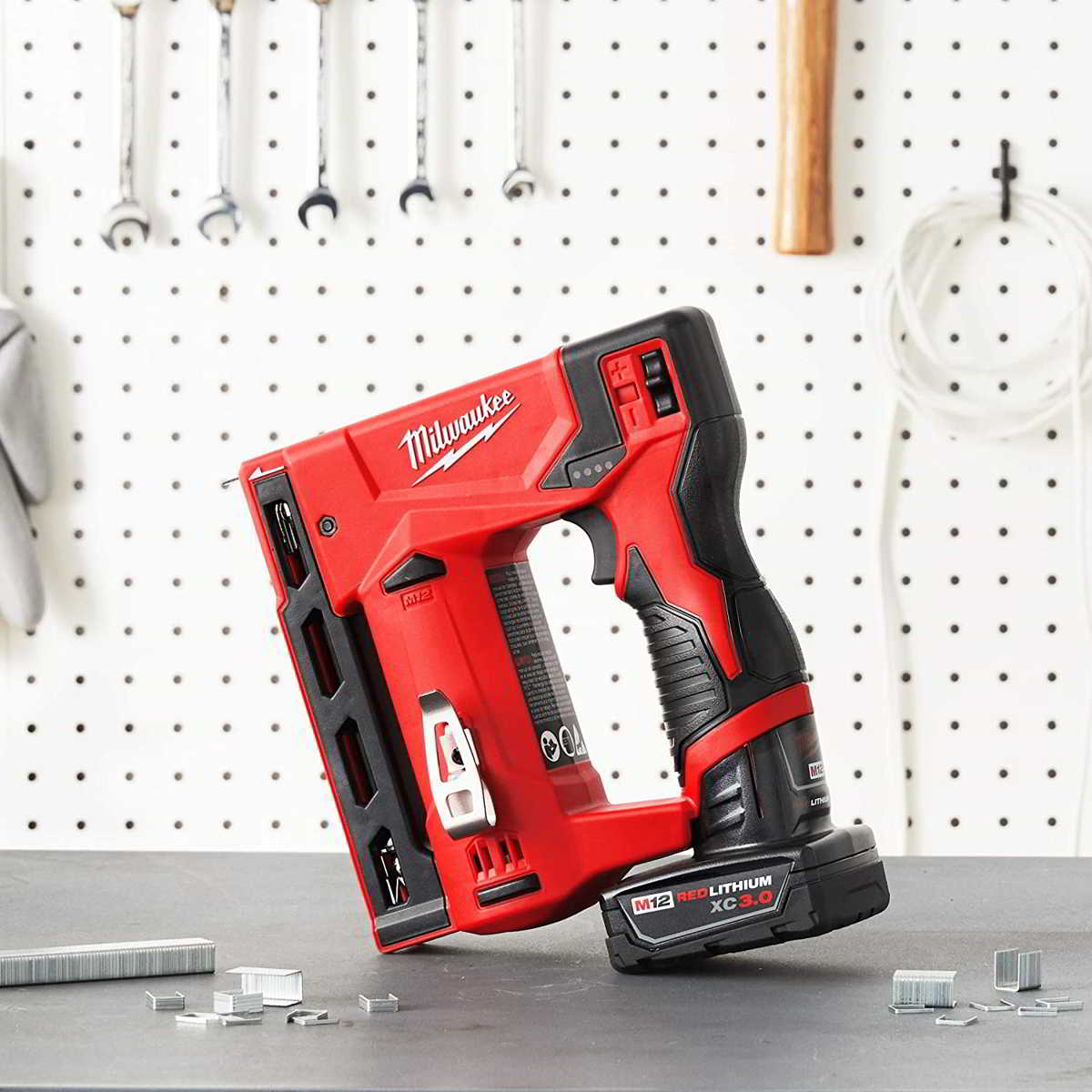As an Amazon affiliate, we may earn a small commision from qualifying purchases.
So, what is a crown stapler used for?
You might be having this question in your mind if you’re a newbie to staplers and nailers so here is the answer:
What is a crown stapler used for?
Before we look at its uses, let us mention something important about the tool:
Now, a crown stapler fires staples – and these have two legs, which is unlike regular single-prong nails.
That said, it works almost the same way as a regular nailer (or nail gun, as some of you prefer to call nailers) which is what makes people get confused about the tool..
Let us now turn to that super important question: What is a crown stapler used for?
What is a crown stapler used for?
Well, overall, a crown stapler can be used for a range of projects and it might be a good tool to have depending on the projects you typically tackle.
To put it in more precise terms, a crown stapler does more than edge nailing plywoods…
Yeah, staples have way more holding power than they’re credited with and can be useful in a variety of applications depending on the type of crown stapler you have in hand.
Just to give you a better idea, here is what you should know about the available crown staplers (there are three types, in total):
Narrow crown stapler (uses 18-gauge staples) -what is a narrow crown stapler used for?
Though it is best for attaching plywood (or anything else thicker/ harder than cloth), a narrow crown stapler (some simply call it a finish stapler) is a much more versatile tool than what most people think…
The truth is, the most common narrow crown stapler uses include finish and trim jobs like molding, cabinets, trim, drawers, fascias, and many other fine-grained applications.
The thing is the narrower crown allows staplers to penetrate surfaces without being very noticeable.
Of course, the thinner staples (it fires 18-gauge staples) mean a much lesser risk of splitting wood.
Medium crown stapler (uses 16 gauge staples)
This fires thicker 16-gauge staples and is best for rougher construction applications where more holding power is necessary such as applying floor sheathing, roof sheathing, and even OSB/plywood sheathing..
That said, some use it for pallet construction, vinyl siding, and even furniture assembly.
In fact, one of my friends extensively uses it in cabinet construction -He prefers stapling 1/2” plywood into a dado (in the face-frame stiles) as well as stapling back panels into side panels using an old medium crown stapler he owns.
Keep in mind that the staple is also a little wider (7/16″ or 1/2″ compared to 1/4″ for narrow crown staplers).
Wide crown stapler – what is a wide crown stapler used for?
Wide crown staplers are the way to go for heavy-duty construction projects like truss building, roofing, housewrap, and lathing.
Reason?
Because they’re bulkier than middle crown staplers, they provide better holding power (despite their legs being sometimes shorter than you could expect)
The fact is there are numerous wide crown stapler uses including for sheathing, foam board insulation, crating, wire lathing, and pallet manufacturing.
In a nutshell, most of the previously-mentioned medium crown stapler uses can be done with this stapler as long you are not worried about the staple messing up the final appearance of the project).
Examples of specific projects you can use crown stapler for
Below are examples of some specific projects you can, in general, use a crown stapler for:
Making milk crates
When making milk crates -out of scrap wood- you can use 3/4″-1″ staples. These have good enough holding strength so you don’t have to, like most folks do, mess with glue.
Well, you could use a brad nailer for the crates- and shoot 18ga brads plus glue- and they will obviously look nicer (and they’ll probably be stronger too), but when you are cranking them out, it is much faster to simply fire some staples in.
Pallet wood paneling
People also use staples for typical pallet wood paneling (over drywall)- the wood is definitely rough meaning the staples won’t be noticeable.
For joints where the wood is not very straight
Occasionally, you can use staples on glued joints, particularly where wood pieces aren’t that straight and again the joint is long(think of a long rabbet / dado joint).
It’s worth mentioning that properly-sized staples should be strong enough to keep the wood pieces together (until glue dries up)- the downside is, of course, bigger holes to fill.
When building a bookcase
Narrow crown staples (probably from ½” to 1½”) are fine when it comes to attaching plywood to the rear of a bookcase or other shelves.
Verdict
Overall, the stapler can be a lot of fun to use for many smaller wood projects.
But it is surely not for anything structural- For anything structural, you will want something way beefier than that.
For example, for heavier crown molding, you’ll probably want to go with 16-gauge finish nailer.
ALSO READ:

